From Fujian to Singapore: The Chen clan’s legacy of toil, tofu and tenacity
From Fujian’s Dongtou village to Singapore’s wet markets, generations of the Chen clan built a life selling bean sprouts and tau kwa. Now, as their food legacy fades, one man keeps the tradition alive while others race to preserve 800 years of family history across the diaspora. Lianhe Zaobao lifestyle correspondent Tang Ai Wei finds out more.
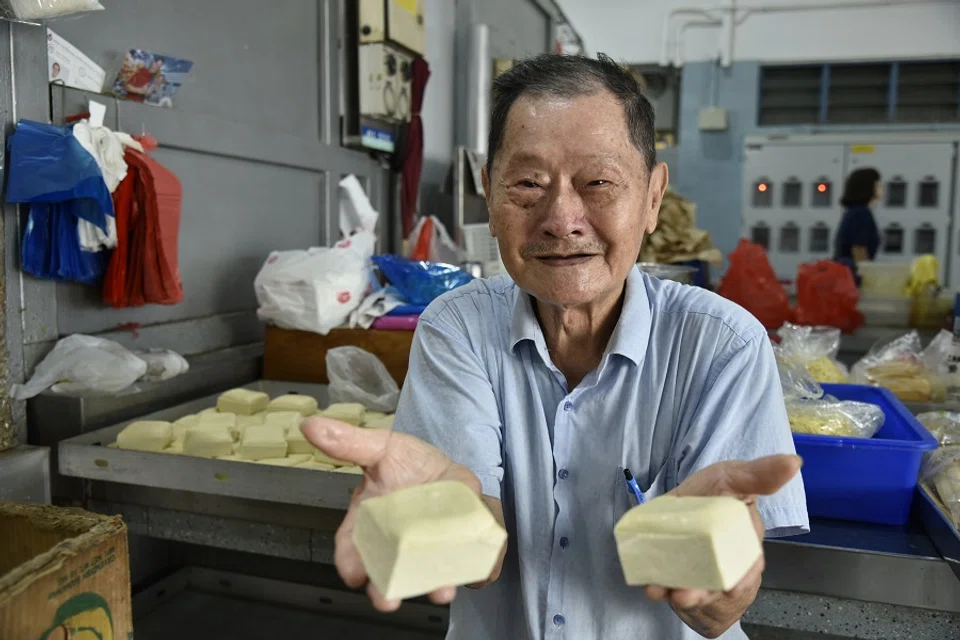
(Photos: Goh Shoo Weng, unless otherwise stated)
During the 1940s to 1950s, young men from Dongtou village (东头村), Guanqiao town, Nan’an city, Quanzhou, Fujian province, left for Nanyang (Southeast Asia) to make a living, either to escape forced conscription or to avoid economic hardship.
Many of the newcomers (新客, sinkheh in Hokkien) worked as coolies, while others grew bean sprouts and made firm tofu or dougan (豆干, tau kwa in Hokkien), and sold them at wet markets. Gradually, the stalls selling bean sprouts, tau kwa and noodles in the wet markets around the vicinity of North Bridge Road (known colloquially as sio po 小坡), Geylang, Joo Chiat, and Changi became predominantly run by members of the Chen clan from Dongtou village.
Supplementing their income
By the second and third generations, most of the descendants were unwilling to continue the business, except 78-year-old Tan Geok Seng (陈育成), one of the few descendants still running a tau kwa stall.
Tan Geok Seng was born in Ann Siang Hill, Toa Payoh. His father, Chen Youpeng (陈友朋), was a strong advocate for local education and charitable causes. The family later moved to Potong Pasir, where they continued making tau kwa, using the tofu dregs to feed the pigs they raised.
“We used to sell our tau kwa at 10 cents for three pieces. I could make a living selling 100 to 200 pieces a day without selling anything else.” — Tan Geok Seng, tau kwa stallholder
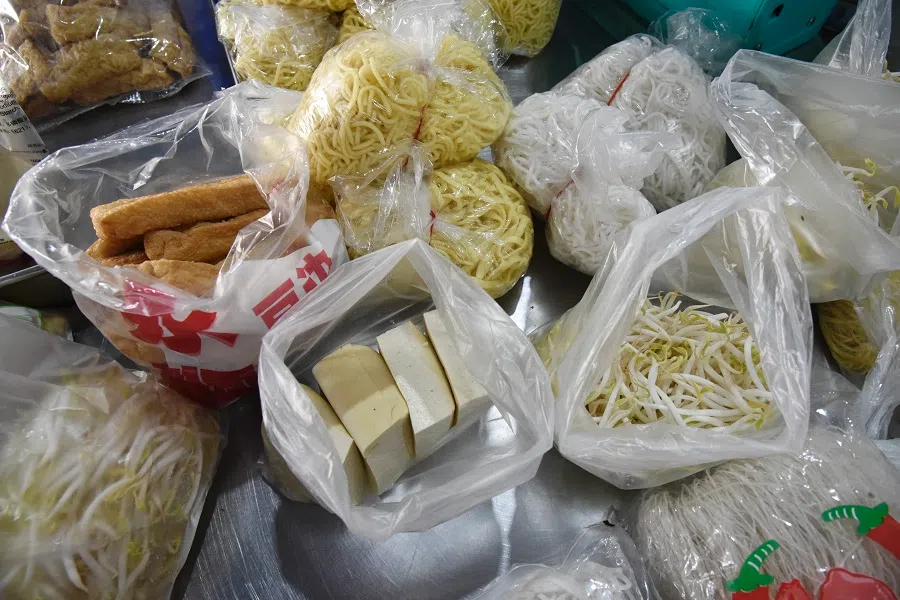
In 1974, Tan Geok Seng began selling tau kwa at a wet market in Block 50A, Marine Terrace. He told Lianhe Zaobao, “We used to sell our tau kwa at 10 cents for three pieces. I could make a living selling 100 to 200 pieces a day without selling anything else.”
As operating costs rose, from 1980 onwards, Tan Geok Seng had to supplement his income by selling bean sprouts and noodles. There was no signboard for his stall and his items were not neatly displayed, yet he always had a steady stream of customers of various ethnicities and ages.
Tan Geok Seng said with a smile, “I earn just enough to get by! I used to arrive at the market at 6am, but now I come as early as 4 or 5am because I have more goods to sort and pack.” He closes his stall and heads home at around 1pm. With his Certificate of Entitlement (the right to vehicle ownership) expiring in two years, and consequently losing his means of transport, he will likely retire. As far as he knows, the few remaining tofu stalls run by descendants from Dongtou village are scattered across Ang Mo Kio and Bedok South.
There are also second-generation descendants who have expanded and modernised this business. Tan Eng Huat (陈荣发), founder of Eng Huat Foodstuff Manufacturer, registered the trade mark under his own name after taking over his father’s business. The factory has automated its production, supplying supermarkets and wet markets, and also acting as a manufacturer for other brands.
Another industry related to soybeans is soy sauce brewing. The old (now defunct) brand Sinsin Food Industries was founded by Tan Leong Seng (陈隆盛) from Dongtou village.
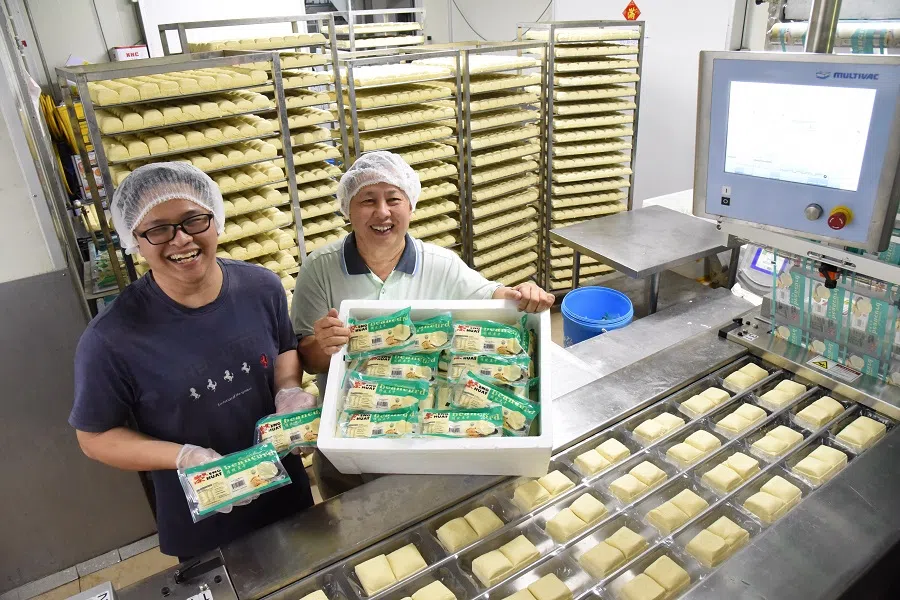
Growing bean sprouts in Geylang
A group of Dongtou village descendants who lived in Lorong 21 and 23 Geylang in the early days made a living by growing bean sprouts. Tan Koon Ker (陈勤考), 78, arrived from Dongtou village at the age of eight. He recalls that many households in the kampungs along those two streets had bean sprout jars. The process from bean to harvest takes about five days.
Another industry related to soybeans is soy sauce brewing. The old (now defunct) brand Sinsin Food Industries was founded by Tan Leong Seng (陈隆盛) from Dongtou village. The soy sauce, fermented bean paste and chilli that it produced is no stranger to the older generation. Noodle-making is another related industry. Tan Geok Seng’s younger brother, 69-year-old Tan Geok Sin (陈育新), still produces kway teow (flat rice noodles) and chee cheong fun (steamed rice noodle roll) until today.
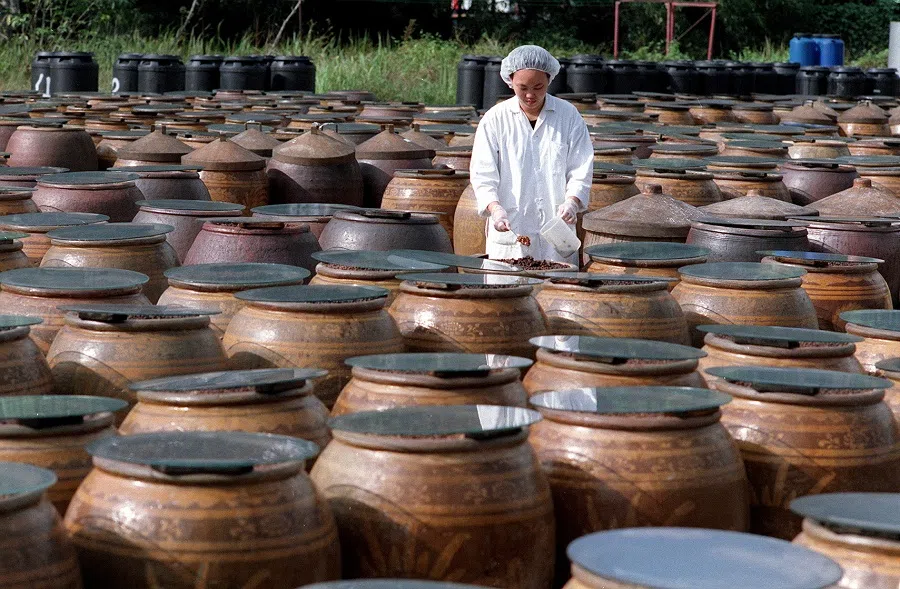
With rising education levels and more diverse career paths available to younger generations, many have moved away from these traditional industries. Today, the descendants of Dongtou village are scattered throughout the island, making it challenging to maintain their sense of community and to keep in touch.
Relying on clan associations
When the pioneers of Dongtou village first arrived 70 to 80 years ago, they mostly settled around Beach Road and Crawford Lane. Fifty-one fellow villagers formed the Pek Sek Tan Clan Association in 1951 (Dongtou village was previously known as pek sek 碧石), and purchased a two-storey shophouse at the Kallang Gasworks area as their meeting place. They also worshipped deities such as the Five Royal Lords of the Yang Family (杨家府五使爷公).
“Dongtou village currently has a population of 10,000, almost all surnamed Chen (陈). I have already connected with descendants of Dongtou village in the Philippines, Hong Kong and Macau. My next step is to find those in Indonesia and Canada.” — Tan Yew Hock (陈宥福), Honorary Secretary, Pek Sek Tan Clan Association
Later, the government acquired the land, and residents were relocated to areas like Geylang and Changi. Due to various factors, the Pek Sek Tan Clan Association was not allocated a new meeting space. Chen Zequan, chairman of the Pek Sek Tan Clan Association, said that they hold an annual dinner to celebrate the birthday of the Five Royal Lords on the 16th day of the ninth lunar month, with around 200 attendees in recent years. At other times, members would organise smaller, informal gatherings and activities.
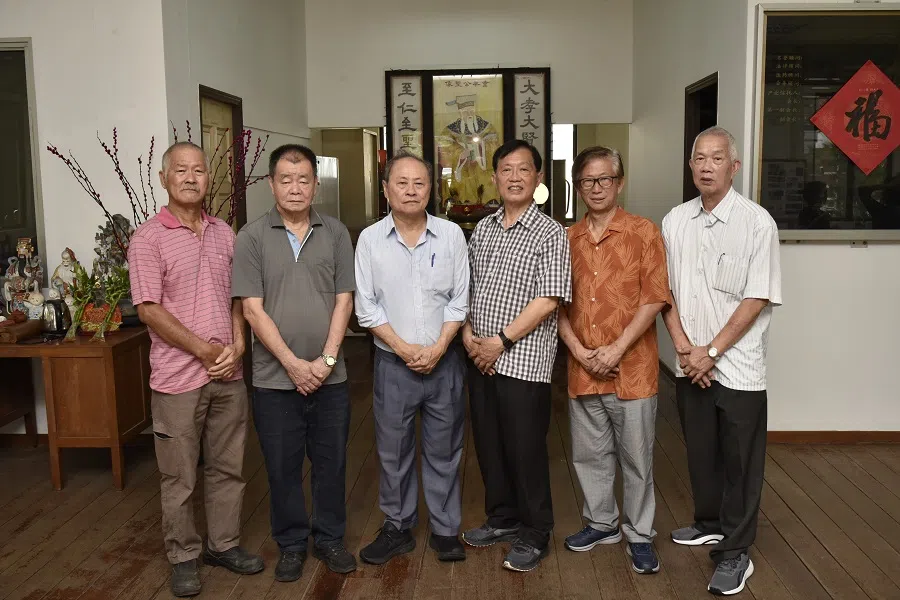
Tan Yew Hock (陈宥福), honorary secretary of the association, has visited China numerous times to trace his roots. Chen Qinggong (陈庆公), the founding ancestor of Dongtou village, settled there over 800 years ago during the Song dynasty. The villagers who ventured to Nanyang have the Dao (道), Zu (祖) and Ze (泽) generation names.
He said, “Dongtou village currently has a population of 10,000, almost all surnamed Chen (陈). I have already connected with descendants of Dongtou village in the Philippines, Hong Kong and Macau. My next step is to find those in Indonesia and Canada.” He has compiled extensive illustrated materials, hoping members will share them with younger generations to help them learn about their ancestral home and maintain the bonds of clanship and kinship forged by their forebears.
This article was first published in Lianhe Zaobao as “福建东头村陈氏后人 南来卖豆干豆芽谋生”.





